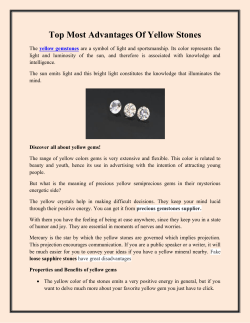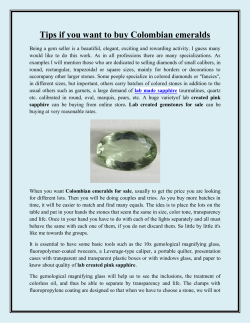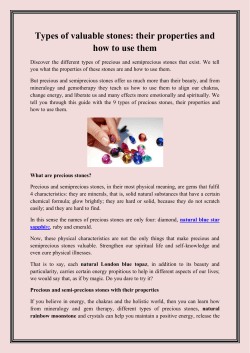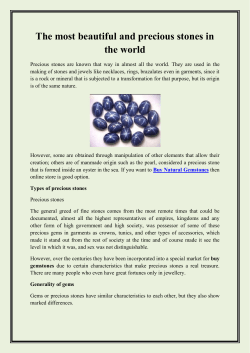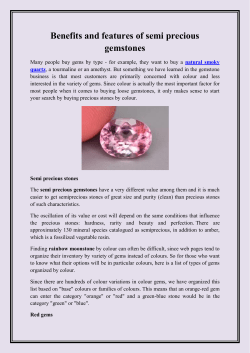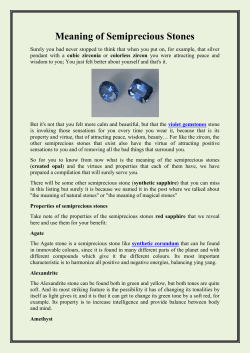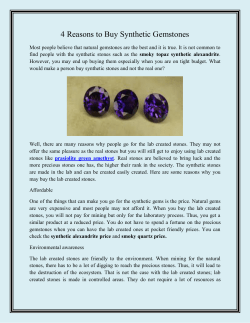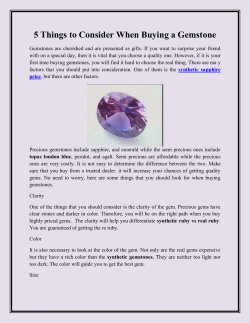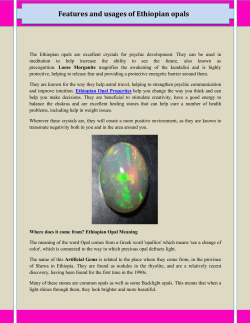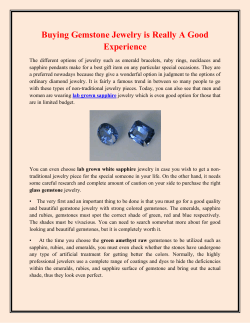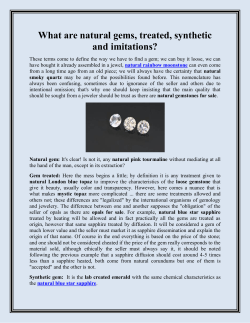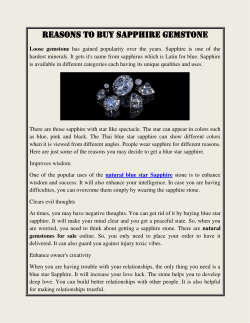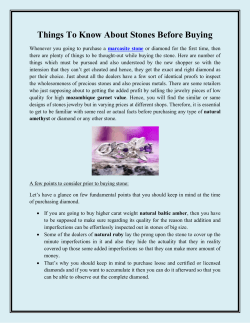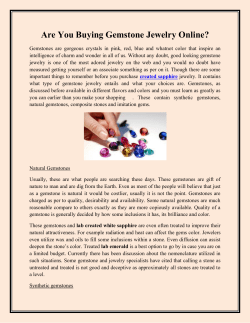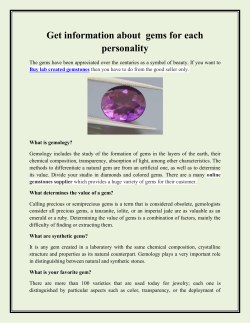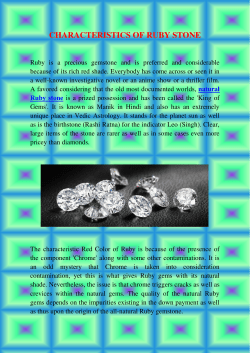
Guide about semi precious stones
Guide about semi precious stones As we be familiar with, the human being, from its existence, has always felt devotion and endowed with a certain mysticism to precious or strange stones or stones very difficult to find in nature, conferring different uses: for ornamentation, as a symbol of power and exclusivity, associated with the cult of certain deities and even using them to heal or otherwise. Precious stones and semi precious stones are, almost in their majority, minerals; some of them, however, are organic. Precious stones To distinguish between precious stones and semiprecious stones, three factors are used: 1. Its beauty and perfection. When we talk about the beauty and perfection of a stone, whether precious or semiprecious, we refer to its colour, brightness, transparency and purity. A pure gemstone, without imperfections and with a radiant colour, can have an even higher value than a diamond with similar characteristics. The only three stones or gems considered precious-in addition to diamond-for the above factors is ruby, emerald, white sapphire and blue sapphire. RUBY To take into account that only between 1% and 5% of the rubies extracted from nature are selected for use in jewellery. EMERALD His name comes from Persian; its meaning is "green stone". The emerald stones for sale have always been highly valued, since, despite the existence of other green stones, the only crystal was emerald. At present, we know other crystalline stones of green colour, but none of them is comparable in colour and transparency to the emerald. Only thirty percent of the high quality cubic zirconia mined in the mines is carved for commercialization in jewellery, and of these only in two percent of them there are no visible inclusions. Hence, its rarity and high market value. BLUE SAPPHIRE Like the ruby, it belongs to the Corindon family. Its distinctive feature is its intense blue colour; although there are sapphires of other shades, the most valued and appreciated is the blue sapphire. Any Corundum of a colour other than red is called sapphire; hence, it is adjective and it is called blue sapphire. Natural aquamarine is also good example of the precious gems. Like the ruby, blue sapphire has a hardness of 9 on the Mohs scale. Its rarity increases daily, since many of the sapphire deposits are currently depleted, and those that are discovered cannot meet the demand. An important aspect to take into account is the treatments that are made to natural gems. The most usual treatments are: heating, dyeing and filling of fissures. These treatments improve the optical properties and are admitted. It is important that this is specified and mentioned since in some cases the value of a gem changes substantially when treated. Another fundamental concept is the existence of inclusions. Natural gems like synthetic opal have cavities that house inclusions that can be other minerals, liquids or gases. However we must be careful to make differences between some synthetic stones that are really transformations in laboratories but that result with such perfect characteristics that are considered genuine gems and not a simple artificial stone, to give it a name.
© Copyright 2026

